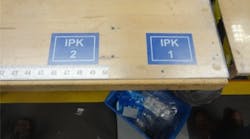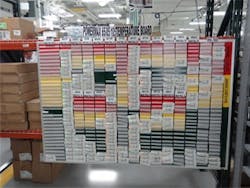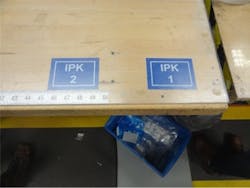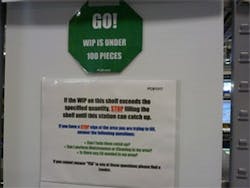Founded in 1968, Hypertherm is a world force in plasma cutting technologies, with products in use in industries as varied as construction, demolition, earth-moving, shipping, and transportation. Hypertherm’s primary manufacturing facility is headquartered in Hanover, New Hampshire, with a newly constructed, 300,000-sq-ft manufacturing facility built in 2012 located about 3 miles away.
While Hypertherm has more than 1,300 associates spread across the globe, all manufacturing takes place in New Hampshire. Incidentally, the company has never had a layoff in its history. And more than 95% of Hypertherm’s supply chain is within 200 miles of its headquarters in Hanover. Even though all of its products are built with locally sourced labor, the company still sells about 60% of them outside of the United States, including 24% to low-cost countries.
Hypertherm’s success can be attributed, in large part, to its ability to leverage its manufacturing operations to drive business growth, which it’s been doing for more than a decade. In the early 2000s, Hypertherm embarked on an aggressive approach to continuous improvement but decided to forgo the traditional method of brainstorming, applying tools, and performing kaizens to eliminate waste and get a little better each day. Instead, Hypertherm set business growth as the goal for all of its continuous improvement efforts.
To achieve this end, the company knew it had to get its manufacturing operations to a point where, “each and every associate can see the flow of value to the customer and fix that flow before it breaks down.” In other words, it had to achieve operational excellence. In practical terms, Hypertherm wanted its production associates, meaning the people who actually handle and build the products on the shop floor, to be able to flow orders to the customer under normal conditions and fix any abnormal flow on their own, without needing management intervention.
This "self-healing flow" enables almost complete autonomy for Hypertherm’s production associates. With so much of the responsibility of flowing product resting with those closest to the manufacturing operations, Hypertherm’s leadership, including its team leaders who directly supervise the production associates, has the time it needs to work on offense, or activities that grow the business in either the short or long term.
Visual flow
Setting self-healing flow as an operational goal meant Hypertherm needed to design and develop systems of flow that the associates could fix on their own without the need for outside involvement. That meant associates had to be able to distinguish normal flow from abnormal flow just by looking at or observing the manufacturing processes. The company achieved this through the heavy use of visual systems that signal when the flow is becoming abnormal.
The associates followed a specific set of design guidelines to create visual, self-healing flow in manufacturing, at mixed model pacemakers and shared resources, in the office, and even in the supply chain, all with the ultimate goal of making the flow so visual that it could be fixed without the need for management intervention. In fact, the intent was for the flow to be so visual that a visitor who had never been to the factory before could come in, follow the flow from end to end, and tell if it was on time without asking any questions. If a visitor could do this, then everyone who worked in the company could, too.
Central to Hypertherm’s creation of visual, self-healing flow was the use of standard visual systems, sequencing boards, and signaling techniques throughout the manufacturing operation. For example, when producing a high mix of customer products, the company uses color-coded visual boards to integrate customer orders with production sequencing at a single key process called the pacemaker, which has eliminated the need for prioritization, expediting, and management directives. Processes that provide components to the pacemaker work off of visual boards, too, as does the material handling device for each process. At Hypertherm, these visual boards are referred to as “temperature boards,” and they let each associate know if they need to produce or not (Figure 1).
The different colors on the temperature board have been linked with different levels of customer demand to indicate each product’s inventory level and its corresponding need for replenishment. “Red” indicates low inventory for a product, and therefore a high need for replenishment. “Yellow” is a warning track, indicating that the associates need to pay attention to the situation. And “green” means the inventory levels are good for that product, and replenishment is not needed as urgently as it is for the products in the yellow or red zones.
At the start of the day, the production associates simply look at this board, process all the orders in the red zones first, then the orders in the yellow zones, and finally the orders in the green zones. If there is more than one product in a red zone, the production associates follow pre-established standard work to determine which product needs to be built first.
Using this visual system, an entire day’s worth of production can be completed without the need for management intervention, team-leader involvement, meetings, or computer reports or printouts. Everything is handled directly by the associates working out on the shop floor and is so visual that even a visitor could quickly tell if the flow is normal or abnormal, on time, or not.
Another example of visual flow can be seen on the production line itself, where products are produced in continuous flow. Between workstations on the line, there are a fixed number of places where work in process (WIP) can physically be placed (Figure 2).
If more work is present than is permitted by the rules of flow, or if the associates see that more work is about to be present, then each associate knows what to do to get the flow back on track, whether by temporarily halting production and cleaning the workstation, engaging in supplemental 5S activities, or even moving up or down the production line to assist another associate with the issue causing the backup.
Again, all of this takes place without the need to ask a supervisor or manager because the standard work for correcting abnormal flow has been pre-established and agreed upon. In Figure 3, there is an even more robust example of what to do when flow breaks down, where the production associates are instructed on what to do if the WIP exceeds one hundred pieces.
If the WIP exceeds 100 pieces, every associate at Hypertherm knows that this process is in an abnormal flow condition, and they also know what to do about it. The standard work for abnormal flow on the sign reads as follows:
If the WIP on this shelf exceeds the specified quantity, STOP filling the shelf until this station can catch up. If you have a STOP sign at the area you are trying to fill, answer the following questions:
- Can I help them catch up?
- Can I perform maintenance or cleaning in my area?
- Is there any 5S needed in my area?
If you cannot answer “yes” to any of these questions, please find a leader.
Only if the production associates cannot help the next process catch up, perform maintenance or cleaning at the workstation, or complete any needed 5S activities would there be a need to seek out a team leader.
“They know what to do, and the flow is very self-healing,” says Kyle Wadleigh, who has been a team leader at Hypertherm for two-and-a-half years. “On the line, we hardly ever have to contact management to fix something. Even if there’s a quality issue, the production associates go directly to the engineering department themselves.”
One of the ways Hypertherm’s team leaders are able to spend so little of their time monitoring production is through the use of "pulse points," which are fixed locations on the shop floor from which anyone can visually determine if the flow is normal or abnormal just by looking at it. From these locations, the team leaders are able to spot problems with the flow anywhere on the line and execute pre-established standard work to fix them before the problems become catastrophic and require an escalation in response.
With such robust systems of flow in place, the team leaders at Hypertherm have the time they need to be heavily involved in improvement projects that directly impact customers and business growth. Wadleigh elaborates:
“When we can create a value stream and flow that’s so smooth and so self-healing and an operation based on the associates, it allows the team leaders time to do other things and improve other areas, and it does the same thing all the way up the organizational ladder.”
Production associates: Growth drivers
At Hypertherm, there are very few management layers directly involved with the 600+ production associates and team leaders. By and large, management does not oversee the day-to-day activities on the shop floor because there is no need for them to. That’s because all production associates go through eight hours of on-boarding training within the first three months of hiring and are required to undergo an additional 16-24 hours of training each year. Part of their training involves learning Hypertherm’s lean standards to achieve operational excellence, which, along with the visual systems, enable a high degree of associate autonomy on the shop floor.
From this initial training on lean and operational excellence, each associate acquires the tools and knowledge necessary to complete improvement projects in the operation, and they begin working on them immediately after their training concludes. Typically, an overarching goal is set by the team leaders, such as a reduction in lead time or the redesign of a production cell to accommodate higher customer demand. After setting this goal, the production associates are the ones responsible for achieving the desired targets.
The team leaders, meanwhile, are usually busy working on yet another improvement project. At Hypertherm, this is where the team leaders spend virtually all of their time: working on improvement projects that grow the business, not just eliminate waste.
“I don’t think I’ve ever seen an improvement project that wasn’t geared toward business growth and flow,” says Sarah Dugan, who has been a team leader at Hypertherm for the past year-and-a-half. Some of the improvement projects for which the team leaders have recently been responsible include reducing lead time to accommodate faster customer turnaround requests, redesigning production lines to handle additional throughput and growth, and even setting up a greenfield site in the company’s new facility, which opened in the fall of 2012.
For Hypertherm’s team leaders, enhancing the operation and overall organization through growth-oriented improvement projects is a never-ending undertaking, and they feel confident their production associates are up to the challenge. “When we find a way to do something better, we want to come back and see if it can be done ever better the next time,” says Wadleigh.
When speaking of how he and his fellow team leaders work with the production associates to achieve business growth, Wadleigh says, “It’s not, 'I want you to do this,' but, 'What can I do for you? Here’s our common goal. What do you need from me to achieve that?' The associates drive this company, and it really shows.”
Team leaders: Growth engines
Most supervisors at manufacturing companies typically spend much of their time telling people what to work on next, expediting, prioritizing, overseeing production quotas, dealing with quality and rework issues, managing employees, searching for parts, and going to daily meetings to receive status updates.
At Hypertherm, the day-to-day activities a team leader performs are quite different. While the team leaders still have many of the traditional responsibilities of supervisors, because the flow at Hypertherm is so robust and only stops once or twice a week, these normal supervisory activities take very little time to complete. The team leaders can then spend most of their available time doing things that supervisors in traditional manufacturing companies simply do not have time for: growing the business through offense activities such as participating in or leading training, stepping in to help the production associates when work backs up into warning zones, and becoming heavily involved in improvement projects that directly translate into business growth.
With the complete alignment of all the production associates and the entire organization focused on offense, Hypertherm will continue to propel itself forward to new heights of growth through the concentrated, offense-oriented activities of its team leaders and production associates. It’s a formula that has been working at Hypertherm since the early 2000s, and its track record shows that it’s a proven success.
Read "Cutting equipment builder grows by 50% by going green" to learn more about Hypertherm.




